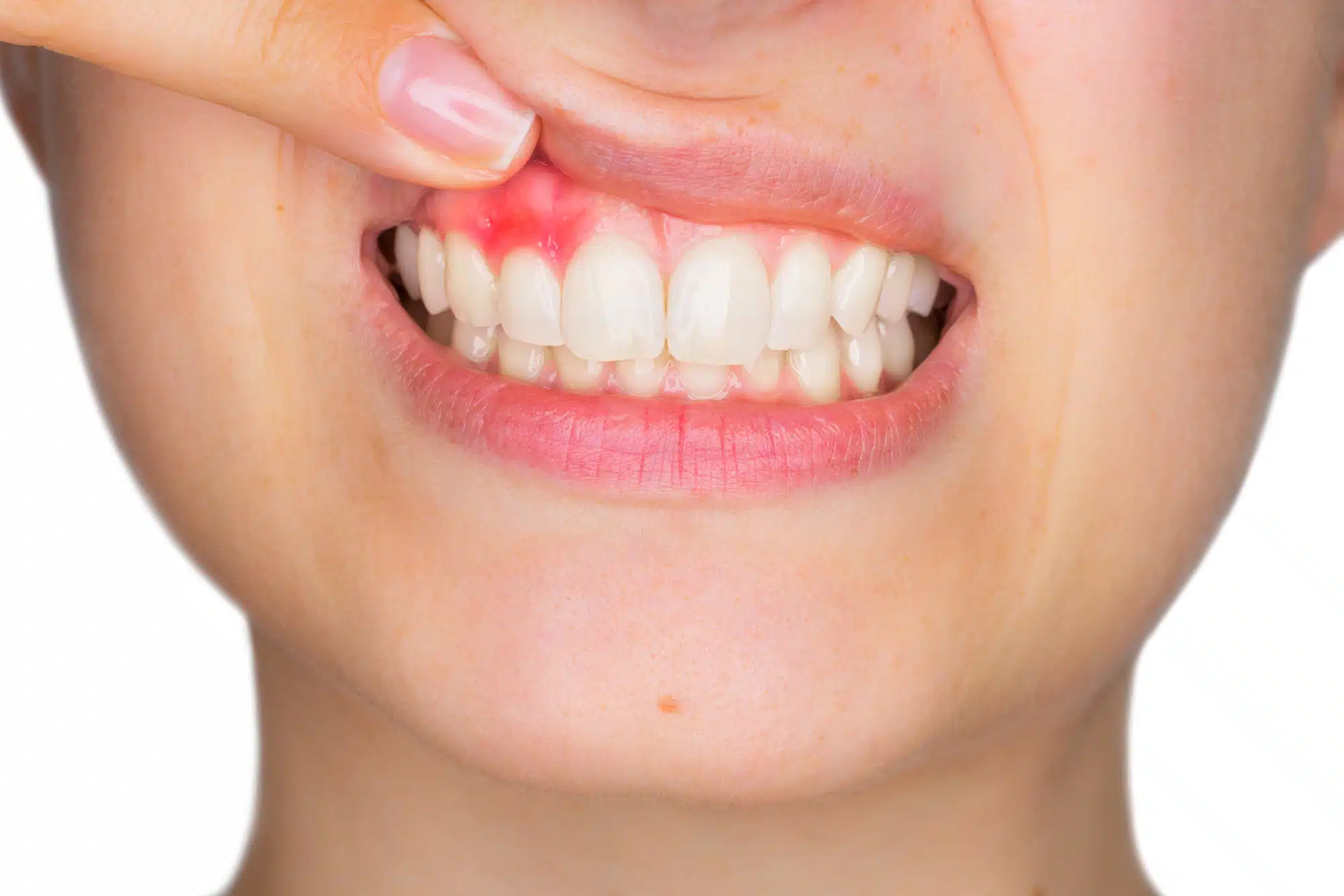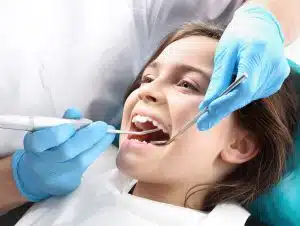
Imagine brushing your teeth during orthodontic care and noticing blood in the sink. This is a common sign that may require bleeding gums treatment. It can affect patients of all ages and often occurs without warning. Unfortunately, many ignore it, assuming it’s just part of the process.
In reality, gum bleeding should never be overlooked. It may be a simple sign of irritation, or it could signal the start of gum disease. Orthodontic appliances can make cleaning more difficult, increasing the chance of inflammation.
This blog will explain why gum bleeding happens during orthodontic care. You will learn about the common causes, the risks of ignoring symptoms, and how to prevent further damage. We will also outline effective treatment options that protect both your gums and your orthodontic results.
Understanding Bleeding Gums During Orthodontic Treatment
Orthodontic appliances change the way your mouth feels and functions. Orthodontic braces, wires, and aligners can place gentle but constant pressure on teeth. This pressure can make gums more sensitive, especially in the early stages of treatment.
Brackets and wires also create new surfaces where plaque can accumulate. Food particles can get trapped in these spaces, leading to bacterial growth. Without thorough cleaning, this buildup irritates the gums and makes them more likely to bleed.
Plaque that stays along the gumline can cause mild inflammation. In some cases, the gums appear red or swollen. If this irritation continues, the bleeding may become more noticeable during brushing or flossing.
Not all gum bleeding during treatment means there is a serious problem. Some patients experience mild bleeding when they first receive new appliances. This can happen because the gums are adjusting to the changes in the mouth. The irritation often decreases as you improve your cleaning routine and the tissues adapt.
However, ignoring symptoms can be risky. Mild irritation can turn into more advanced gum problems if oral hygiene remains poor. Understanding the cause is essential for protecting your smile. Patients who notice bleeding gums with braces should take it as a sign to improve cleaning habits and seek professional advice.
With consistent care and proper technique, gum sensitivity can improve even during orthodontic treatment. Taking early steps to address bleeding helps ensure healthy gums and a smooth path to your final smile.
What Are the Common Causes and Treatment for Bleeding Gums?
Plaque buildup is one of the most common reasons for gum bleeding during orthodontic treatment. Brackets, wires, and other appliances create more surfaces for food and bacteria to stick to. Without careful cleaning, this buildup can cause inflammation and discomfort. Many cases of bleeding gums in orthodontics begin with plaque accumulation and poor daily hygiene.
When oral hygiene is inconsistent, bacteria thrive along the gumline. This leads to swelling, redness, and tenderness in the gums. Over time, the inflammation becomes worse, and bleeding may occur even with gentle brushing or flossing.
Mechanical irritation can also play a role. Wires, elastic bands, or even the edges of aligners may rub against the gum tissue. This friction can create small sores or areas of sensitivity, which bleed easily during cleaning.
Some patients start orthodontic care with existing gum problems. Early gum disease, untreated inflammation, or previous injury to the gums can make bleeding more likely. Orthodontic appliances may not cause these problems, but they can make symptoms more noticeable.
Identifying the specific cause is important for proper treatment. While improved home care can help in many cases, professional attention may be needed to address severe inflammation or infection. Regular checkups allow your orthodontist to spot early signs of trouble and recommend targeted solutions.
Knowing what triggers bleeding gums can help you take the right preventive steps. With a clean mouth and careful appliance adjustments, most gum issues can be managed successfully during orthodontic treatment.
When to Worry: Warning Signs You Shouldn’t Ignore
Mild gum bleeding can improve with better cleaning, but some symptoms require quick attention. Persistent swelling and redness that remain despite thorough brushing, flossing, and effective treatment for bleeding gums such as professional cleanings, medicated rinses, or targeted periodontal care may indicate a deeper problem.
If bleeding increases instead of decreasing, it could signal an infection or advancing gum disease. This change should be checked by your orthodontist or dentist.
Bad breath or pus near the gumline can also mean an infection is present. These symptoms often point to gum inflammation orthodontics cases that need professional care. Ignoring them may lead to serious complications.
Other warning signs include teeth feeling loose or gums beginning to recede. These changes can affect the stability of your teeth and the success of orthodontic treatment.
Prompt action is the best way to prevent long-term damage. Schedule an appointment if you notice these symptoms, even if they seem minor. Early intervention can stop the problem before it threatens your overall dental health.
Preventing Bleeding Gums with Proper Treatment
Good daily care is the best defense against needing bleeding gums treatment during orthodontic care. Brushing at least twice a day is essential. Use a soft-bristle toothbrush and small circular motions to clean around each bracket or aligner edge. Spend extra time along the gumline to remove plaque without causing irritation.
Flossing is equally important. Standard floss can be difficult with braces, so consider using floss threaders or a water flosser. Interdental brushes are also useful for reaching tight spaces between teeth and brackets. These tools remove trapped food particles that regular brushing might miss.
Regular professional cleanings are another key step. Your dentist or hygienist can remove hardened plaque and tartar that home care cannot. Scheduling these visits every few months during orthodontic treatment keeps gums healthy and reduces inflammation risk.
Choose toothpaste and mouth rinses that are safe for orthodontic appliances. Look for fluoride-based formulas to strengthen enamel and prevent decay. Alcohol-free rinses are gentler on sensitive gums and help maintain moisture in the mouth.
Preventing bleeding gums in orthodontics starts with consistent, thorough cleaning and professional oversight. Combining proper brushing and flossing with routine dental visits helps keep gums healthy throughout treatment. By making gum care a priority, you protect both your smile and your orthodontic results.
Treatment Options for Orthodontic Patients
Prompt care can quickly resolve gum bleeding during orthodontic treatment. Professional cleanings are often the first step in effective orthodontic bleeding gums treatment. These cleanings remove plaque and tartar that daily brushing and flossing cannot reach.
In some cases, your orthodontist may adjust wires or brackets to reduce gum irritation. Small changes to appliance positioning can prevent repeated rubbing on sensitive tissue. Invisalign Aligners can also be smoothed or trimmed if their edges cause discomfort.
Medicated rinses or gels may be recommended for controlling bacteria and reducing inflammation. These products often contain antimicrobial agents that target the source of gum problems. They can be used alongside your regular cleaning routine for better results.
For more complex cases, coordinated care between your dentist and orthodontist is important. Your dentist can address gum disease or other oral health issues, while your orthodontist ensures appliances do not worsen the condition. This combined approach offers the best chance for quick recovery and lasting gum health.
Early treatment not only stops bleeding but also protects your orthodontic progress. Ignoring symptoms may lead to longer treatment times or more serious gum problems. Seeking professional care at the first sign of trouble ensures your smile stays healthy throughout your orthodontic journey.
How Bleeding Gums and Treatment Affect Orthodontic Progress
Bleeding gums may seem like a minor inconvenience, but they can slow orthodontic progress. Inflammation can make it uncomfortable to brush and floss effectively. This often leads to more plaque buildup and worsening gum health.
When gum problems remain untreated, adjustments during orthodontic visits may be delayed. Your orthodontist might postpone tightening or changing appliances until the gums heal. This can extend your overall treatment time.
Severe gum issues can also cause tissue recession or bone loss around teeth. These changes may affect how teeth move and how well they stay in place after treatment.
Maintaining healthy gums ensures that your orthodontic plan stays on track. Good oral hygiene, regular professional cleanings, and prompt attention to any bleeding can make a significant difference.
If gum problems appear during treatment, contact your orthodontist immediately. Addressing issues early keeps your smile healthy and your orthodontic results on schedule.
Conclusion
Bleeding gums treatment during orthodontic care is not something to ignore. With the right care, the problem can be controlled. Early action prevents minor irritation from turning into serious gum disease. Professional guidance ensures you follow the best steps for healing and prevention.
Your orthodontist can identify the cause and recommend a treatment plan that fits your needs. Combined with consistent home care, these steps can restore gum health quickly. Regular checkups also help track your progress and prevent future issues.
The sooner you address bleeding gums, the better your results will be. Healthy gums allow orthodontic treatment to progress smoothly and on time.
Book a visit with Webb & Goldsmith Orthodontics to get expert help for bleeding gums in orthodontics. Protect your smile, improve your gum health, and keep your treatment on track with professional care. Contact us today to schedule your appointment.




